









| Gypsy Moth (Lymantria dispar (Linnaeus, 1758)) |










|
|
Scientific name: Lymantria dispar (Linnaeus, 1758) Common name: Gypsy Moth Other names: Other scientific name: Porthetria dispar. French name: Bombyx disparate, Zig-zag, Spongieuse. Order: Lepidoptera Suborder: Heterocera Family: Erebidae Subfamily: Lymantriinae Wingspan: 55 to 60 mm for females which are unable to fly; 40 mm for males. Biotope: Forests, orchards, parks and gardens. Geographic area: Europe, North Africa, central Asia. Introduced to North America in 1869. Flight time: July-August. Number of generations : 1 Caterpillar: The caterpillars are grey and hairy on a beige ground colour marked with dark patches. They show two dorsal red tubercles on each of the five first segments and two blue tubercles on each of the six following segments. They are urticant. Some years there can be infestations which can cause great damage to the forests. Host plant: Many deciduous or coniferous trees of temperate regions. |
The Gypsy Moth exhibits important sexual dimorphism. Females are a white or yellowish white colour with dark wavy cross lines. They are unable to fly and have a nocturnal activity. Males, which are smaller, are brown with similar cross lines. They bear large feathery antennae. They are active during the day. Females lay their eggs in masses on tree bark and cover them with a layer of yellowish hairs. Gypsy Moths over winter as eggs which can withstand freezing temperatures. In spring, caterpillars, at their first development stage, can be carried away by the wind. Then they feed on top of the trees during the day and move down to shelter at the base of the trunk during the night. Only the caterpillar can feed. Imagos have only a reproduction role and then they have a very short lifetime. |
| [To know more about the Gypsy Moth] [Next picture] [Top] |
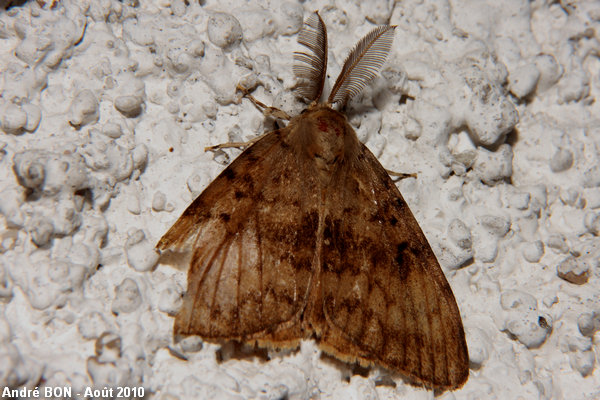
|
Better than my Butterfly Bush (Buddleia), the north wall of my house. I am now used to having a look at it every morning and my observations are multiplying. I have taken my ladder out to shoot pictures of this Gypsy Moth which starts to have slightly damaged wings. |
| [To know more about the Gypsy Moth] [Next picture] [Previous picture] [Top] |
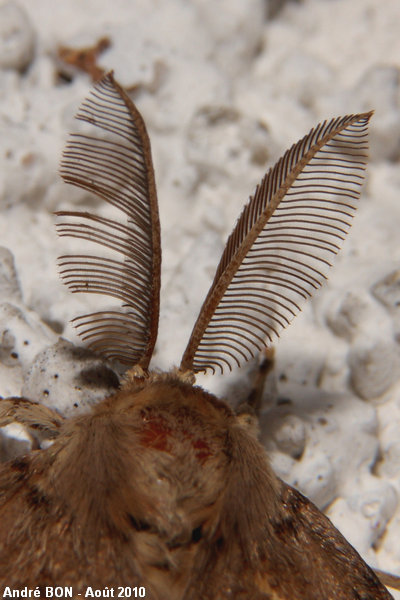
|
The approach (by moving the ladder) has been very easy and I have been able to observe the impressive feathery antennae at a very short distance. I will now try to take picture with a more natural background than the roughcast wall. |
| [To know more about the Gypsy Moth] [Next picture] [Previous picture] [Top] |
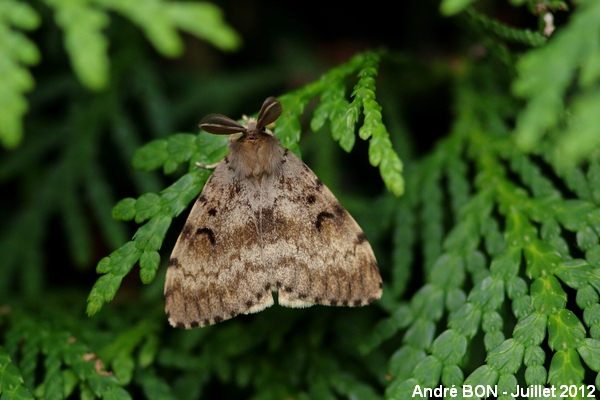
|
This times this Gypsy Moth came to land on a thuja. |
| [To know more about the Gypsy Moth] [Next picture] [Previous picture] [Top] |
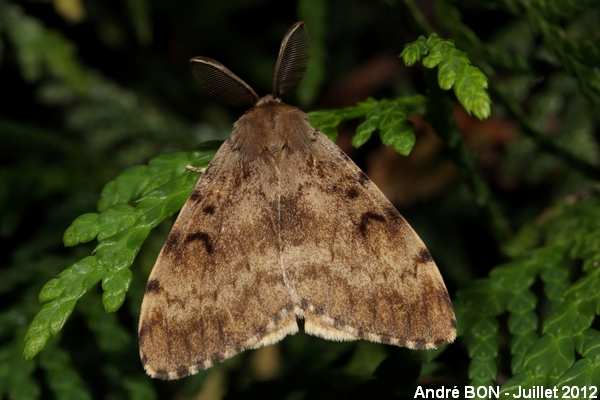
|
A little closer. |
| [To know more about the Gypsy Moth] [Next picture] [Previous picture] [Top] |
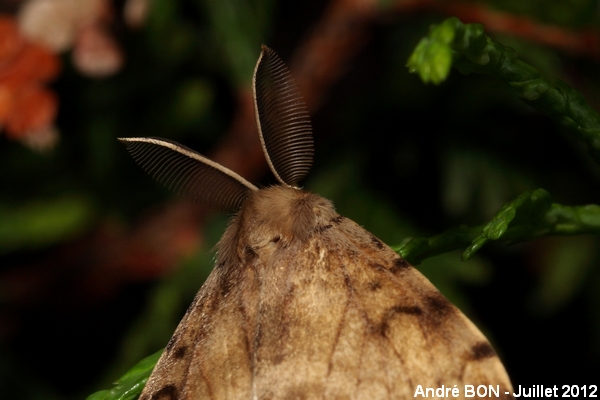
|
… and closer. |
| [To know more about the Gypsy Moth] [Next picture] [Previous picture] [Top] |
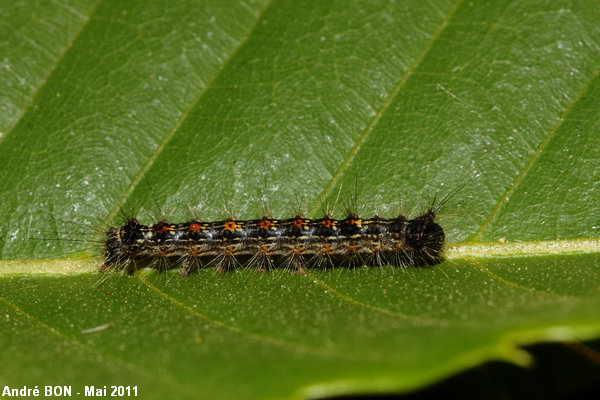
|
This caterpillar, observed in a forest, is not yet at its last development stage. |
| [To know more about the Gypsy Moth] [Next picture] [Previous picture] [Top] |

|
I am not sure that I need to add the pilar of the garden's gate to the list of the known host plants ... |
| [To know more about the Gypsy Moth] [Next picture] [Previous picture] [Top] |
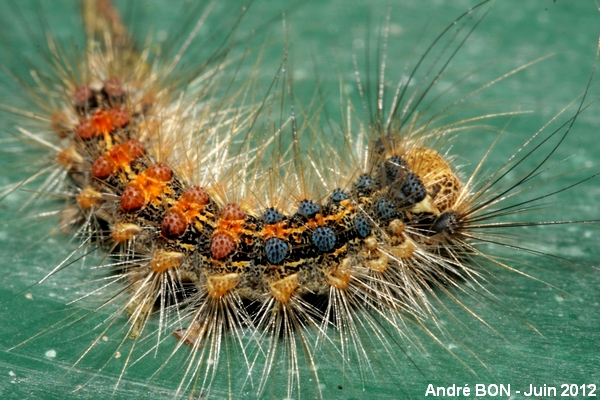
|
This upper side view clearly shows the red and blue dorsal tubercles on this caterpillar at its last development stage. |
| [To know more about the Gypsy Moth] [Next picture] [Previous picture] [Top] |
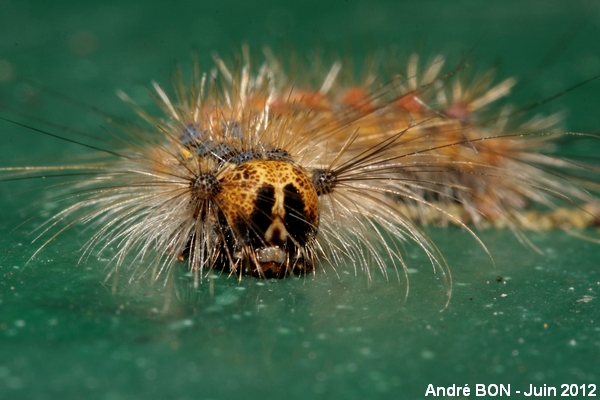
|
Front view of the same caterpillar. |
| [To know more about the Gypsy Moth] [Previous picture] [Top] |
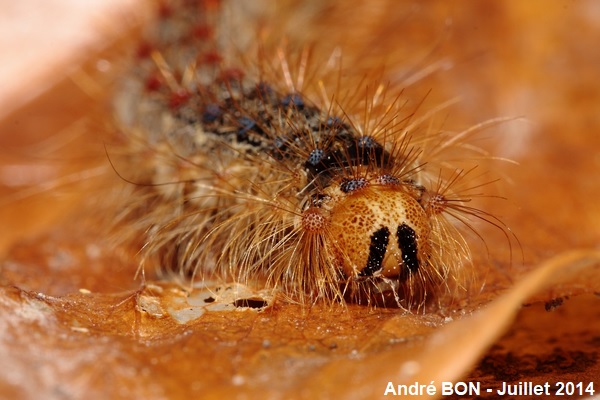
|
The colour of this dead leaf gives a very nice look to this caterpillar picture. |